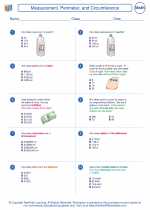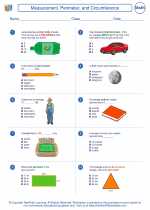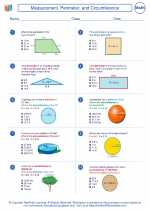Comparing Numbers
Understanding the Concept of Comparison
When we compare numbers, we are looking at how they relate to each other in terms of magnitude. We use comparison symbols to indicate the relationship between two numbers. The main comparison symbols are:
- Greater than: >
- Less than: <
- Greater than or equal to: ≥
- Less than or equal to: ≤
- Equal to: =
Comparing Integers
When comparing integers, it's important to remember that the greater the number, the farther it is to the right on the number line. Similarly, the lesser number is located farther to the left on the number line. For example, when comparing 5 and 3, we can see that 5 is greater than 3 because it is farther to the right on the number line.
Comparing Fractions
When comparing fractions, it's important to find a common denominator before making comparisons. Once the fractions have the same denominator, you can compare the numerators. For example, when comparing 3/4 and 2/3, you can find a common denominator of 12. When both fractions are converted to have a denominator of 12, you can then compare the numerators to determine which fraction is greater.
Comparing Decimals
When comparing decimals, you can align the decimal points and compare the digits place by place, starting from the left. If the digits are equal, move to the next place value until a difference is found. For example, when comparing 3.25 and 3.5, you can see that 3.5 is greater because the first differing digits are 5 and 2.
Study Guide
Here are some key points to remember when comparing numbers:
- Understand the concept of magnitude and how it relates to the position on the number line.
- Remember the comparison symbols and their meanings.
- For fractions and decimals, ensure that they have a common denominator before making comparisons.
- Practice comparing different types of numbers to strengthen your understanding of the concept.
By mastering the skill of comparing numbers, you will be able to make informed decisions in various mathematical and real-life situations.
.◂Math Worksheets and Study Guides Seventh Grade. Measurement, Perimeter, and Circumference

 Worksheet/Answer key
Worksheet/Answer key
 Worksheet/Answer key
Worksheet/Answer key
 Worksheet/Answer key
Worksheet/Answer key
